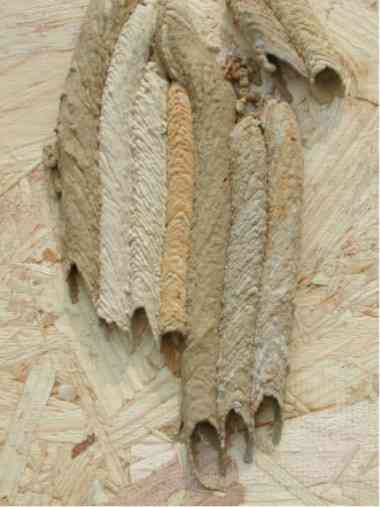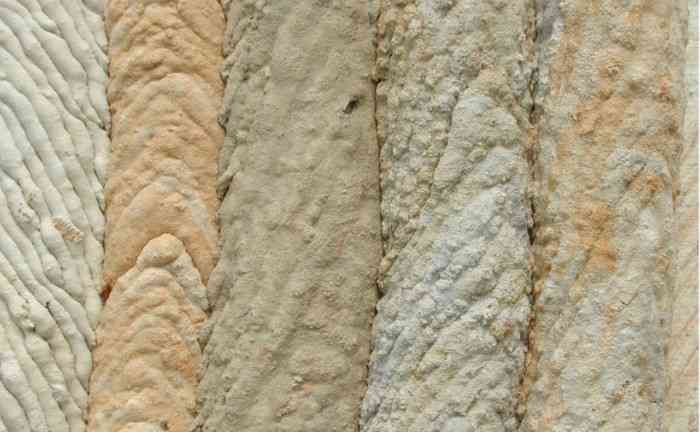Organ Pipe Wasps
AKA Mud Daubers, AKA Blue Devils
Trypoxylon politum
Blue
Devils, as they are commonly known in the Southeastern US, are badly named,
as they are very "laid back" and rarely offer to sting anyone. They are quite
large, and they are not intimidated by your presence, so, if they fly around you, they
might be a bit frightening. However there is nothing to fear....unless you want to try to
hold them in your hand. They just "look you over," then go about their business
of building and provisioning their nests.
These creatures are also
known for the architecture of their nests, which are tubular in style, and remind folks of
organ pipes, hence another name. They make these nests of mud, which gives us a third name
for them. Actually they prefer high quality clay, and have been known to lead people to
clay deposits for use by potters.

Image Copyright 2001, David L. Green
|

Image Copyright 2001, David L. Green
|
She's all black except for
white feet, but that black is the prettiest you've ever seen, irridescent blue in the
sunshine....
She's a nervous sort, characterized by flicking her wings every few
seconds, even when she is otherwise still. But she never stays still for long. Her primary
reason for being is to reproduce. To do that she has to build a nest and provision it with
parallyzed prey. |
She gathers mud from
wherever it can be found and builds her nest in a sheltered spot, under the eaves, or
inside an abandoned building. Some folks, fearful of this harmless and beneficial wasp,
knock down these nests whenever they see them around their home. They lose a thing of
beauty when they do. |

Image Copyright 2001, David L. Green
This closeup shows the variety of mud sources from which
mother fashions her nest. She carefully rolls up a little ball of mud, then carries it
home to be applied bit by bit.

Image Copyright 2001, David L. Green
A broken nest cell showing the parallyzed spiders that are stored for the young larva to
eat.
Trypoxylon
larvae: her babies
Trypoxylon pupae: her adolescents
Trypoxylon prey: found in nest
Turn about: Trypoxylon as prey
Trypoxylon at Hilton Pond Nature Center, SC
Home



